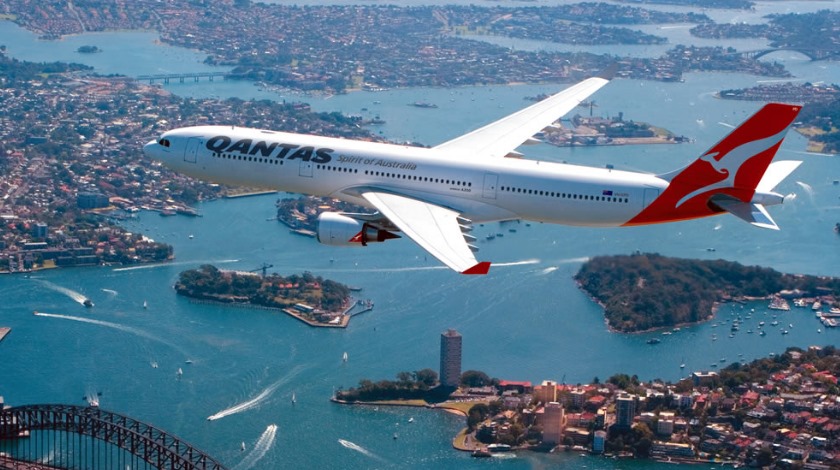Photo: qantas.com
Reading Time: 2 minutesQantas reported a consolidated net profit of A$515 million ($372.1 million) for the first half of its FY2017 (July-December 2016), down 25.1% from A$688 million in the first half of FY2016.
Group revenue declined 3.3% to A$8.2 billion for the period. Expenses stayed even year-over-year (YOY) at A$7.4 billion. The group’s operating profit came to A$812 million, down 25.8% from A$1.1 billion.
The Australian flag carrier said its profit decline in the first of its financial year was largely related to the inclusion in last year’s result of an A$201 million gain from the sale of Qantas’s Sydney Airport terminal.
Qantas Domestic’s EBIT for the first half was A$371 million, down 4.1% YOY, with an operating margin of 12.7%, down 0.2 point from last year. Qantas Domestic’s capacity decreased 1.5% YOY to 18.3 billion ASKs but the division’s passenger load factor (PLF) increased 0.8 point to 77.3%.
Qantas International’s EBIT for the period totaled A$208 million, down 22.3% YOY; the division’s operating margin was 7.3%, down 1.8 points; international capacity grew 4% YOY to 32.8 billion ASKs; international PLF was 81.3%, down 2 points from last year.
Jetstar Group’s EBIT totaled A$275 million, a 5% increase YOY; the Group’s operating margin was 14.8%, up 1.1 point YOY. Capacity increased 0.4% to 24.7 billion ASKs, and overall PLF for the business unit was 83.3%, up 1.1 points. Profits in the division were driven by Jetstar’s international operations to and from Australia.
Qantas Freight’s EBIT for the period totaled A$27 million, down 29% YOY, with a 5.6% operating margin, down 1.6 points YOY.
For the consolidated Qantas Group, passenger traffic increased 1.1% during the half-year period, totaling 61.3 billion RPKs; overall group capacity increased 1.4% to 75.7 billion ASKs, producing a group PLF of 81%, down 0.2 point YOY.
The group had 308 aircraft in service as of Dec. 31, 2016, a 2.7% increase (eight aircraft) YOY. During the first half period, Qantas purchased three Fokker F100s to enable capacity reductions on routes previously operated by larger aircraft and Jetstar leased two Airbus A321s to meet demand in short-haul leisure markets. Qantas said it will defer delivery of Jetstar’s first A320neo until financial year 2019, though two Boeing 787-9s are scheduled for entry into Qantas International’s fleet by late 2017. Qantas will retire its two oldest 747s by mid-2018; eventually five 747s will be retired as eight 787s enter Qantas’ fleet.
Group capacity is expected to increase approximately 1%-2% in the second half of FY2017; group domestic capacity will decrease by approximately 2% while group international capacity will increase by approximately 3%.
“Our focus is to stay disciplined on capacity, keep downward pressure on costs and introduce game-changing improvements like the [787s) and high-speed Wi-Fi,” Qantas CEO Alan Joyce said.
“Internationally, the market will remain challenging, but we expect the revenue trend we saw in the first half to moderate. We’ll be bedding down the capacity increases we’ve already announced, using our existing fleet in high-growth Asian markets.”
Qantas’ first commercial service with free Wi-Fi is expect to debut by the end of March, the company said, with the service eventually rolling out to 80 domestic aircraft and later to Qantas’ international and regional fleets. The group also introduced a premium economy service for its 787 aircraft, which Joyce said will offer more personal space, more reclining space, better lighting and mobile device storage.

